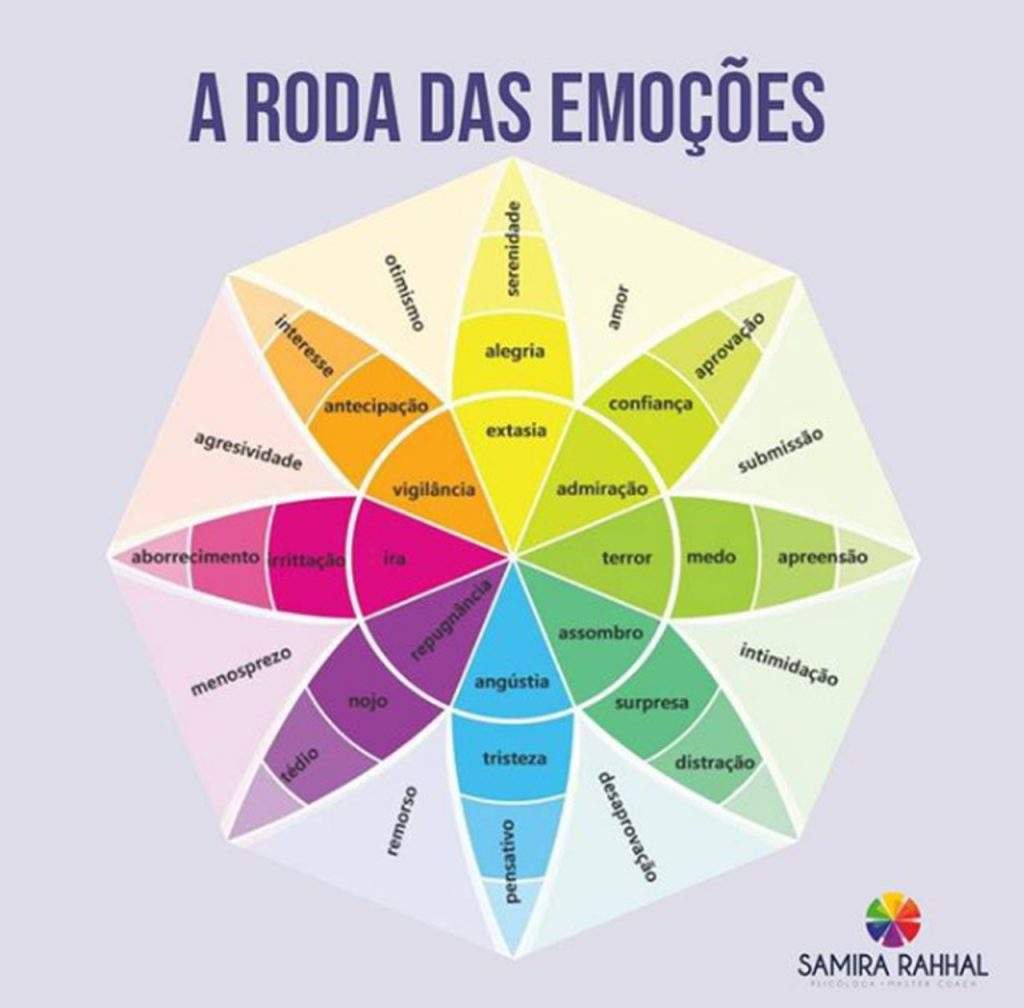Wheel of emotions: Learn how to identify feelings
Table of contents
Throughout life we experience thousands of emotions, but some can be difficult to identify. Not everyone has the ability to name and communicate feelings, but there is a tool that can help: the wheel of emotions. The tool is a circular chart divided into sections and subsections to help the individual better identify and understand their emotional experience, at anymoment.
See_also: Itchy legs when running: what can it be?It was elaborated by Robert Plutchik, an American psychologist, in 1980. For him, emotions are necessary and promote our survival and adaptation.

Source: //www.instagram.com/samira.rahhal/
How to use the wheel of emotions
As shown in the picture above, the emotions are organized by color and coordinated into three phases, which include:
- External edges: On the outer edges, you can find low intensity emotions, for example, acceptance, distraction, boredom, and so on.
- Towards the center: As you move toward the center, the color deepens and the softer emotions become your basic emotions: trust, surprise, fear, etc.
- Center circle: The central circle houses the most intense feelings: admiration, amazement, anguish, among others.
Take a look at the graph
Pay attention to every detail of the graph, analyzing and identifying which emotions relate best to what you are feeling at that moment.
Expand Your List
It is normal to always use the same word to refer to your emotions. However, if you have a "standard" emotion, you may want to add new words to your vocabulary in order to help family and friends understand even more what you are feeling.
For example, before a date do you find yourself really anxious or just unsure?
Search for positive emotions
Don't look exclusively for negative emotions on the wheel of emotions, such as sadness and anguish.
So look only for those that really benefit mental health, which may include, for example, gratitude, joy, confidence, and creativity.
According to a study positive people are less likely to suffer memory loss as they get older.
See_also: German Volume Training (GVT): technique to gain musclesRead more: Positive people have lower risk of memory loss
Benefits wheel of emotions
Using the wheel of emotions can be really beneficial, see what the main benefits are:
- It facilitates the classification of emotions;
- It makes it possible to identify emotions more precisely and clearly.
- It stimulates the understanding of the relationships between different emotional states;
- It promotes empathy;
- It helps the individual to better understand the feelings of others;
- It improves attention and identification of one's own emotions;
- It increases the ability to manage and conduct feelings;
- It can be used in educational psychology and emotional education as a learning tool.

